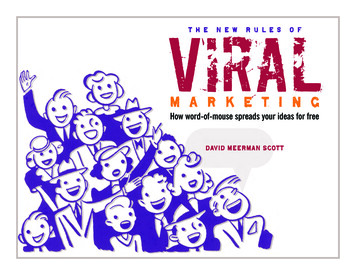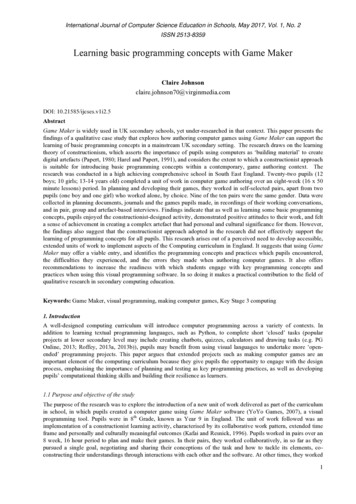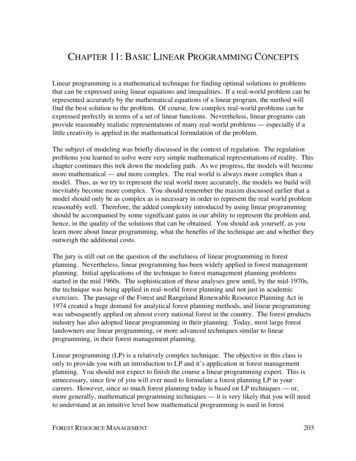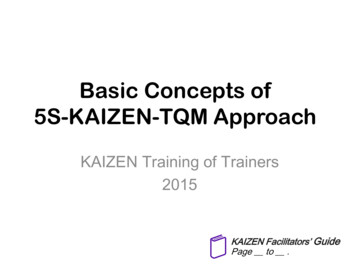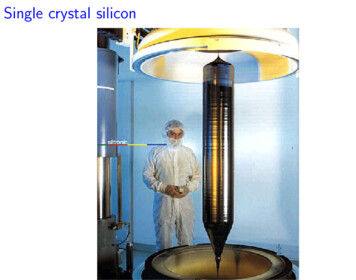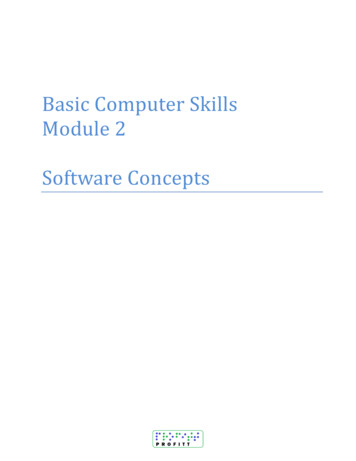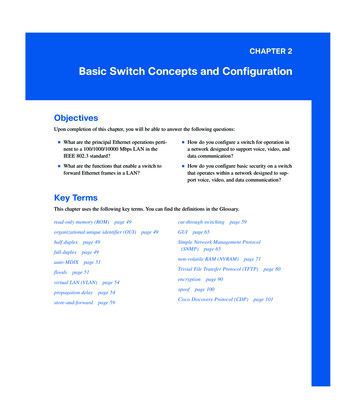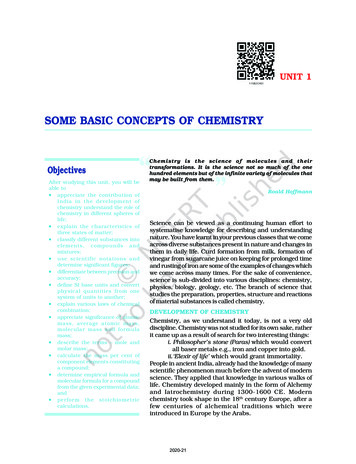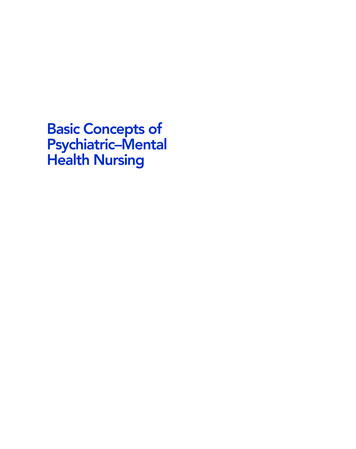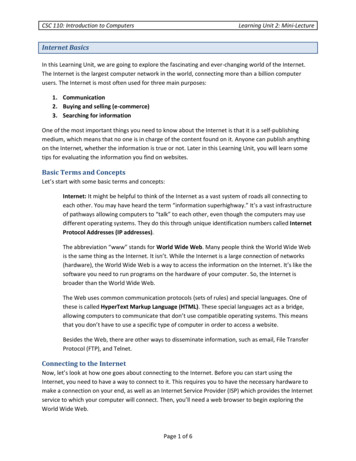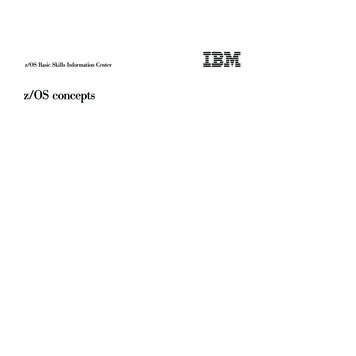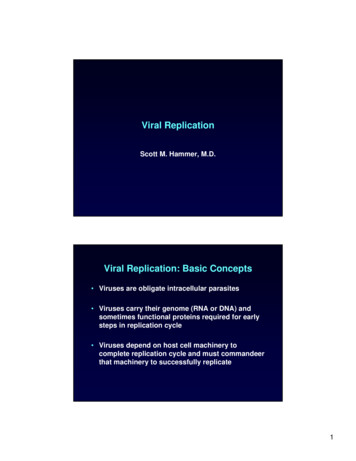
Transcription
Viral ReplicationScott M. Hammer, M.D.Viral Replication: Basic Concepts Viruses are obligate intracellular parasites Viruses carry their genome (RNA or DNA) andsometimes functional proteins required for earlysteps in replication cycle Viruses depend on host cell machinery tocomplete replication cycle and must commandeerthat machinery to successfully replicate1
Viral Replication: Basic Concepts Replication cycle produces- Functional RNA’s and proteins- Genomic RNA or DNA and structural proteins 100’s-1,000’s new particles produced by eachcycle- Referred to as burst size- Many are defective- End of ‘eclipse’ phase Replication may be cytolytic or non-cytolyticSteps in Viral Replication: Attachment(First Step) Surface protein on virus attaches to specificreceptor(s) on cell surface- May be specialized proteins with limited tissuedistribution or more widely distributed- Virus specific receptor is necessary but not sufficientfor viruses to infect cells and complete replicative cycle2
Selected Virus Barr VirusHIV-1Measles virusParvovirusPoliovirusRhinovirusCARCAR, CD55Integrin VLA-2, CD55CD21CD4, CCR5, CXCR4CD46Erythrocyte P AgPVRICAM-1Steps in Viral Replication: Penetration(Second Step) Enveloped viruses penetrate cells through fusionof viral envelope with host cell membrane- May or may not involve receptor mediated endocytosis Non enveloped viruses penetrate by- Receptor mediated endocytosis- Translocation of the virion across the host cellmembrane3
Influenza Virus Replication CycleFrom Fields VirologySteps in Viral Replication: Uncoating(Third Step) Makes viral nucleic acid available fortranscription to permit multiplication to proceed Mechanism variably understood depending uponthe virus4
Uncoating of Influenza VirusEndosomeFrom Fields VirologySteps in Viral Replication: Basic Strategiesof Transcription and Translation(Fourth and Fifth Steps) ( ) RNA Æ Proteins (-) RNA Æ ( ) RNA Æ Proteins RNA Æ DNA Æ RNA Æ Proteins DNA Æ RNA Æ Proteins5
Steps in Viral Replication:Assembly and Release(Sixth and Seventh Steps) Process involves bringing together newly formedgenomic nucleic acid and structural proteins toform the nucleocapsid of the virus Nonenveloped viruses exhibit full maturation inthe cytoplasm or nucleus with disintegration ofcellSteps in Viral Replication:Assembly and Release(Sixth and Seventh Steps) Many enveloped viruses exhibit full maturation asthe virion exits the cell- Viral proteins are inserted into the host cell membrane- Nucleocapsids bind to these regions and bud into theextracellular space- Further cleavage and maturation of proteins may occurafter viral extrusion- Cytolytic activity of these viruses varies6
Influenza VirusFrom Fields VirologyRetrovirusesFrom Fields Virology7
Steps in Viral Replication:Assembly and Release(Sixth and Seventh Steps) Herpesviruses (enveloped) assemblenucleocapsids in the nuclei of infected cells andmature at the inner lamella of the nuclearmembrane- Virions accumulate in this space, in the ER and invesicles- Virion release is associated with cytolysisHerpes Simplex VirusFrom Fields Virology8
Schematic of Replication Cycle of ( ) RNA SingleStrand Viruses Coding for One Sized RNAGenomic RNA binds toribosomes and is translatedinto polyproteinPolyprotein is cleavedGenomic RNA’s serve astemplates for synthesis ofcomplementary full length(-) RNA’s by viral polymeraseFrom Fields Virology(-) strand RNA serves astemplate for ( ) strand RNA’s;these serve to produce morepolyprotein, more (-) strandRNA’s or become part of newvirionsSchematic of Replication Cycle of( ) RNA Single Strand Viruses Coding forGenomic and Subgenomic RNA’sGenomic RNA binds toribosomes but only a portionof 5’ end is translated intonon-structural proteins(-) strand RNA is synthesized.Different classes of ( ) RNA’sare produced. One is translated into a polyprotein whichis cleaved to form structuralproteins. Another is full lengthand serves as genomic RNAfor new virionsFrom Fields Virology9
Schematic of Nonsegmented (-) RNA StrandVirus Replication CycleTranscription of (-) strand occursafter entry and mediated by virionpackaged transcriptase( ) strand RNA’s produced; proteinssynthesizedFull length (-) strand RNA’sproduced and packaged into newvirionsTranscription and translation takeplace entirely in cytoplasmFrom Fields VirologySchematic of Segmented (-) RNA StrandVirus Replication CyclemRNA’s are synthesized fromeach segmentViral proteins are synthesized( ) strand RNA’s are synthesizedand serve as templates for(-) strand genomic RNA’sFrom Fields Virology10
Schematic of Herpesvirus Replication Cycle(DS DNA Virus Which Replicates in Nucleus)Sequential, orderedrounds of mRNA andprotein productionregulate replicationStructural proteinsproduced during lastcycle of replicationFrom Fields VirologyHIV-1 Virion11
HIV LifeCycleHIV leteHIV HR1-HR2interaction12
Primary HIV Infection:Pathogenetic Steps Virus – dendritic cell interaction- Infection is typically with R5 (M-tropic) strains- Importance of DC-SIGN Delivery of virus to lymph nodesActive replication in lymphoid tissueHigh levels of viremia and disseminationDownregulation of virus replication by immuneresponse Viral set point reached after approximately 6monthsPHI: Early Seeding of Lymphoid TissueSchacker T et al: J Infect Dis 2000;181:354-35713
Primary HIV Infection:Clinical Characteristics 50-90% of infections are symptomatic Symptoms generally occur 5-30 days afterexposure Symptoms and signs- Fever, fatigue, myalgias, arthralgias, headache, nausea,vomiting, diarrhea- Adenopathy, pharyngitis, rash, weight loss,mucocutaneous ulcerations, aseptic meningitis, occas.oral/vaginal candidiasis- Leukopenia, thrombocytopenia, elevated liver enzymes Median duration of symptoms: 14 daysThe Variable Course of HIV-1 InfectionTypical ProgressorAIDSViral nical LatencyCD4 LevelCViral ReplicationPrimary HIVInfectionAIDSCD4 LevelCD4 LevelARapid ProgressorPrimary HIVInfectionViral ReplicationPrimary HIVInfection Clinical Latency?monthsyearsReprinted with permission from Haynes. In: DeVita et al, eds. AIDS: Etiology, Treatment and Prevention.4th ed. Lippincott-Raven Publishers; 1997:89-99.14
Primary HIV Infection:Determinants of Outcome Severity of symptoms Viral strain- SI (X4) vs. NSI (R5) viruses Immune response- CTL response- Non-CTL CD8 responses- Humoral responses? Viral set point at 6-24 months post-infection Other host factors- Chemokine receptor and HLA genotype Gender and differences in viral diversity? Antiviral therapy- Near vs. long-term benefit?Natural History of UntreatedHIV-1 Infection1000800CD4 Cells600Early Opportunistic InfectionsLate Opportunistic Infections40020001Infection2345678910 11 12 13 14Time in Years15
Antiviral Agents for scriptaseReverse transcriptase inhibitorsProtease inhibitorsMechanism of T20/T1249Mediated Fusion InhibitionModified from Weissenhorn et al., Nature 387, 426-430 (1997)and Furuta et al., Nature structural biology 5, 276-279 (1998).T20T1249FusionBlockadegp120Cell Membrane--- ---------------- -- ---------------- ------ ---------------- -- ---------------- ---Fusion peptideHR1ReceptorBindingXHR2ConformationΔ Conformation- ---------------- ---Virus Membrane--- ---------------- -- ---------------- ---Native FormMembraneFusion--- ---------------- -- ---------------- ------ ---------------- ---- ---------------- -- ---------------- ---gp41“Ensnared” TransitionState IntermediateFusionIntermediateCore Structure16
From Fields Virology. 11 Schematic of Herpesvirus Replication Cycle (DS DNA Virus Which Replicates in Nucleus) Sequential, ordered rounds of mRNA and protein production regulate replication Structural proteins produced during last cycle of replication From Fields Virology HIV-1 Virion. 12 HIV Life Cycle HIV Entry Fusion Complete CD4 Attachment HR1-HR2 interaction CXCR4 CCR5 HIV HIV gp120 .
